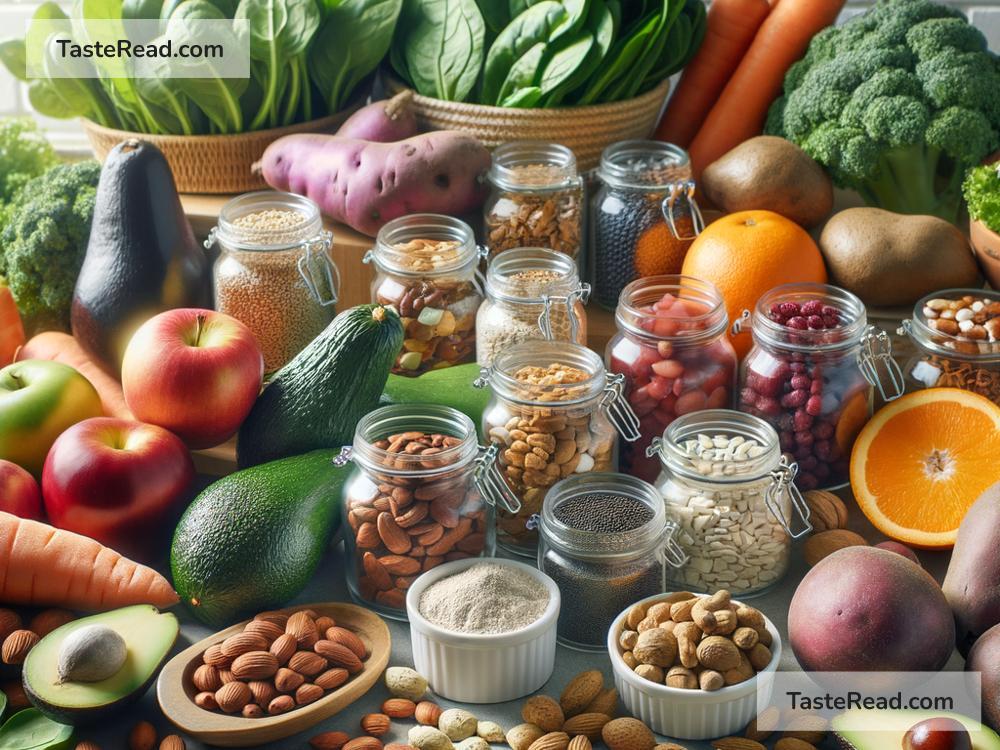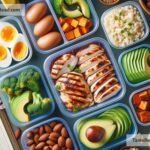How to Plan Meals for Optimal Mineral Intake
Minerals are essential nutrients your body needs to stay healthy and strong. They help your bones, teeth, muscles, blood, and overall body function properly. Getting the right minerals into your diet is important, but planning meals with optimal mineral intake might seem confusing at first. Don’t worry—it’s simpler than you think! This blog will show you easy ways to plan balanced meals to meet your mineral needs.
What Are Minerals, and Why Do You Need Them?
Minerals are tiny substances found in food that play big roles in your body. For example:
- Calcium: Strengthens bones and teeth and helps muscles work properly.
- Iron: Allows your blood to carry oxygen to every part of your body.
- Potassium: Keeps your muscles, heart, and nerves functioning well.
- Magnesium: Supports your energy levels and helps muscles relax.
- Zinc: Boosts your immune system and aids in healing wounds.
Minerals come in two groups:
- Macro-minerals: Your body needs these in large amounts (e.g., calcium, potassium, magnesium).
- Trace minerals: Your body needs smaller amounts of these (e.g., iron, zinc, selenium).
Eating a wide variety of healthy foods ensures your body gets the minerals it needs every day.
Easy Meal Planning Tips for Mineral-Rich Meals
Here are simple steps to help you plan meals for optimal mineral intake:
1. Focus on Whole Foods
Whole, unprocessed foods are the best sources of minerals—things like fruits, vegetables, whole grains, nuts, seeds, dairy products, and lean proteins. Choose fresh or minimally processed foods whenever possible.
For example:
– Instead of grabbing chips, snack on a handful of almonds (rich in magnesium).
– Swap packaged breakfast cereal for a bowl of oatmeal topped with banana slices (high in potassium).
2. Eat Colorful Fruits and Vegetables
Fruits and vegetables are packed with minerals and other nutrients. To ensure you’re getting a variety, aim for a “rainbow plate” with different colors at each meal.
Examples:
– Green spinach or broccoli (rich in calcium and magnesium).
– Orange sweet potatoes or carrots (contain potassium).
– Red bell peppers or tomatoes (good for potassium and magnesium).
– Purple eggplants or blueberries (small amounts of trace minerals).
3. Include Dairy or Alternatives
Dairy products like milk, yogurt, and cheese are excellent sources of calcium. If you avoid dairy, look for plant-based alternatives like almond milk or soy yogurt fortified with calcium.
For example:
– Add Greek yogurt to your breakfast for calcium and protein.
– Use fortified almond milk in smoothies or your morning coffee.
4. Make Room for Lean Proteins
Proteins like chicken, turkey, fish, eggs, and beans also deliver important minerals. For example, lean beef contains iron, and fatty fish like salmon is a great source of selenium and magnesium.
Try meals like:
– Grilled chicken with roasted sweet potatoes (iron and potassium).
– A bean salad with olive oil dressing (iron, magnesium, and zinc).
5. Choose Whole Grains Over Refined Grains
Whole grains contain minerals like magnesium, selenium, and zinc. Refined grains lose much of their natural nutrients during processing.
Examples:
– Swap white rice for brown rice or quinoa.
– Choose whole-grain bread over white bread for sandwiches.
6. Snack on Nuts and Seeds
Nuts and seeds are mineral powerhouses. Almonds, walnuts, sunflower seeds, and pumpkin seeds contain zinc, magnesium, and selenium. Keep small portions handy for healthy snacking.
Ideas for snacks:
– Trail mix with dried fruit and nuts (magnesium, potassium, and zinc).
– A tablespoon of chia seeds sprinkled on yogurt (calcium and magnesium).
7. Don’t Forget Iron-Rich Foods
Iron is an especially important mineral for energy, blood flow, and overall health. Add iron-rich foods like spinach, legumes, red meat, or fortified cereals to your meals.
Pro tip: Pair iron-rich foods with a source of vitamin C (like oranges or tomatoes) to help your body absorb the iron better.
Practical Meal Ideas
Here’s a sample day to show how easy it is to plan meals for optimal mineral intake:
Breakfast:
- Scrambled eggs with spinach (iron and calcium).
- A slice of whole-grain toast (magnesium and selenium).
- A glass of fortified orange juice for vitamin C and calcium.
Lunch:
- Grilled chicken salad with mixed greens, avocado, and tomatoes (iron, potassium, and magnesium).
- A side of quinoa (zinc and selenium).
- A piece of fruit, like an apple or banana (potassium).
Snack:
- A handful of almonds and dried cranberries (magnesium and zinc).
Dinner:
- Baked salmon with roasted broccoli and sweet potatoes (selenium, magnesium, and potassium).
- A serving of brown rice or whole-grain pasta (iron and magnesium).
Watch Out for Things That Block Mineral Absorption
Certain foods or habits can make it harder for your body to absorb minerals. For example, consuming too much soda (high in phosphates) can interfere with calcium absorption. Coffee and tea can reduce iron uptake if consumed with meals. Balance is key—moderate consumption of these items is fine.
Conclusion
Planning meals for optimal mineral intake doesn’t have to be complicated! Focus on whole, nutrient-rich foods, eat a variety of fruits and vegetables, include lean proteins and healthy grains, and enjoy nuts and seeds as snacks. By mixing up your meals and keeping them colorful, you’ll naturally get the minerals your body needs to thrive.
Remember, small changes make a big difference. Plan your meals with care, and watch your body feel stronger and more energized. Happy eating!


